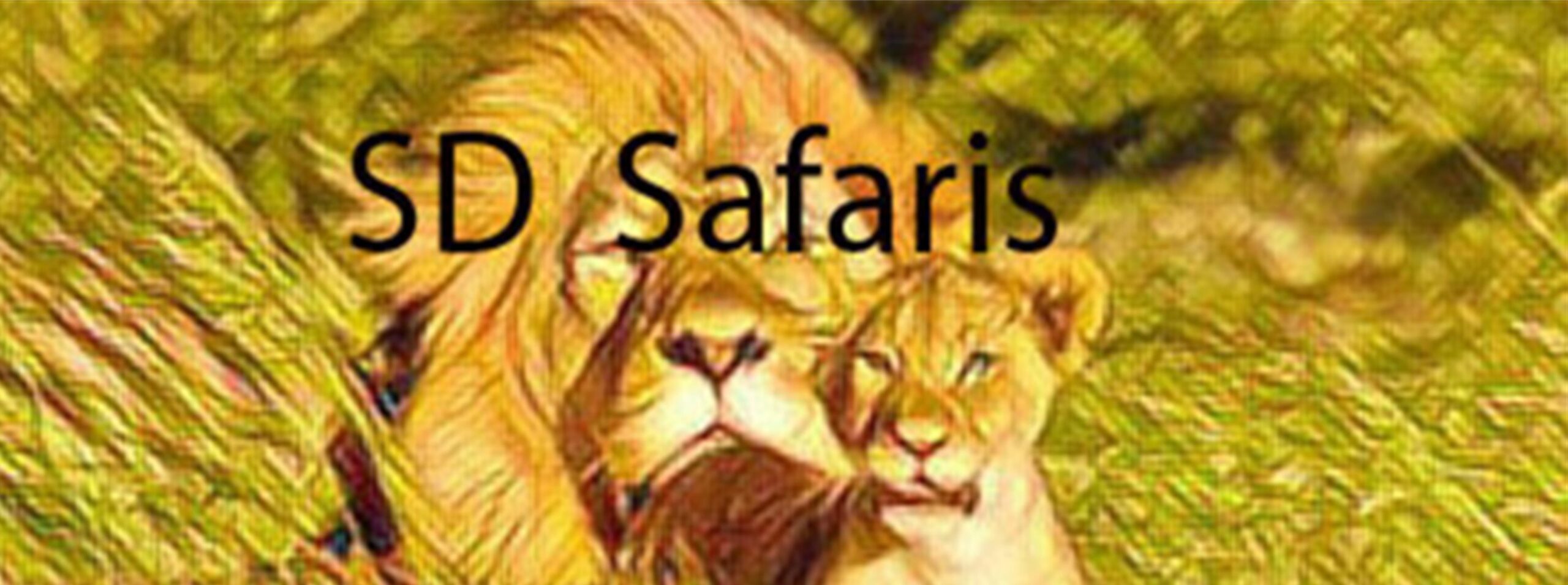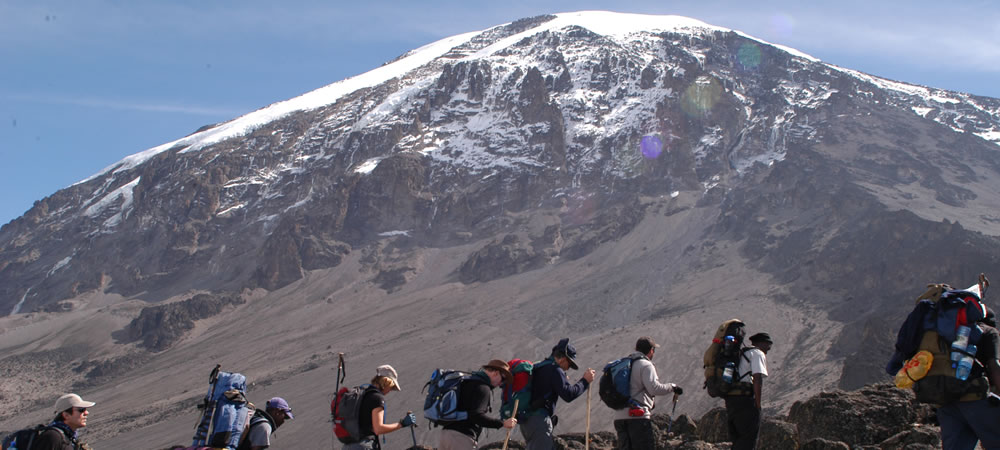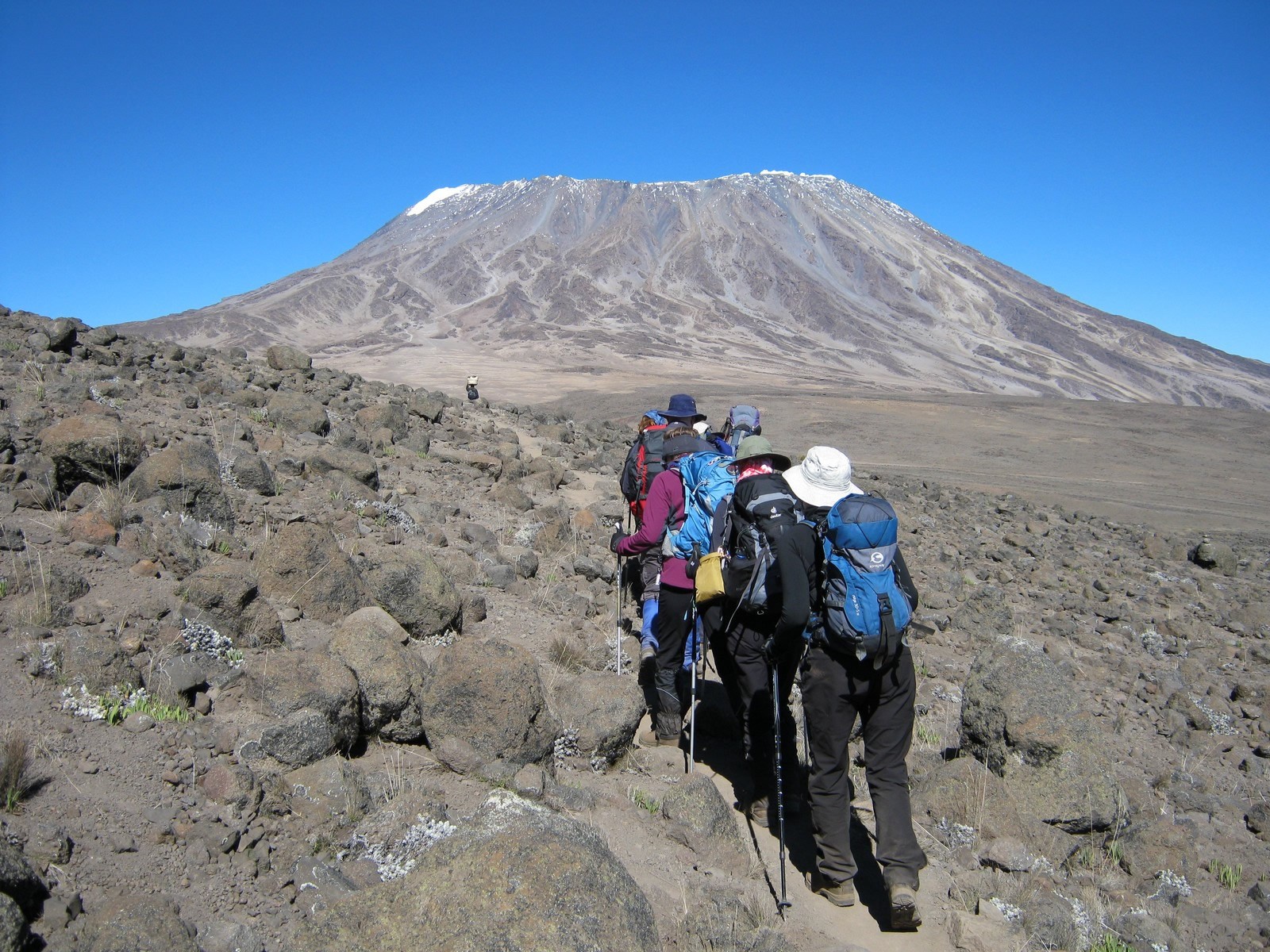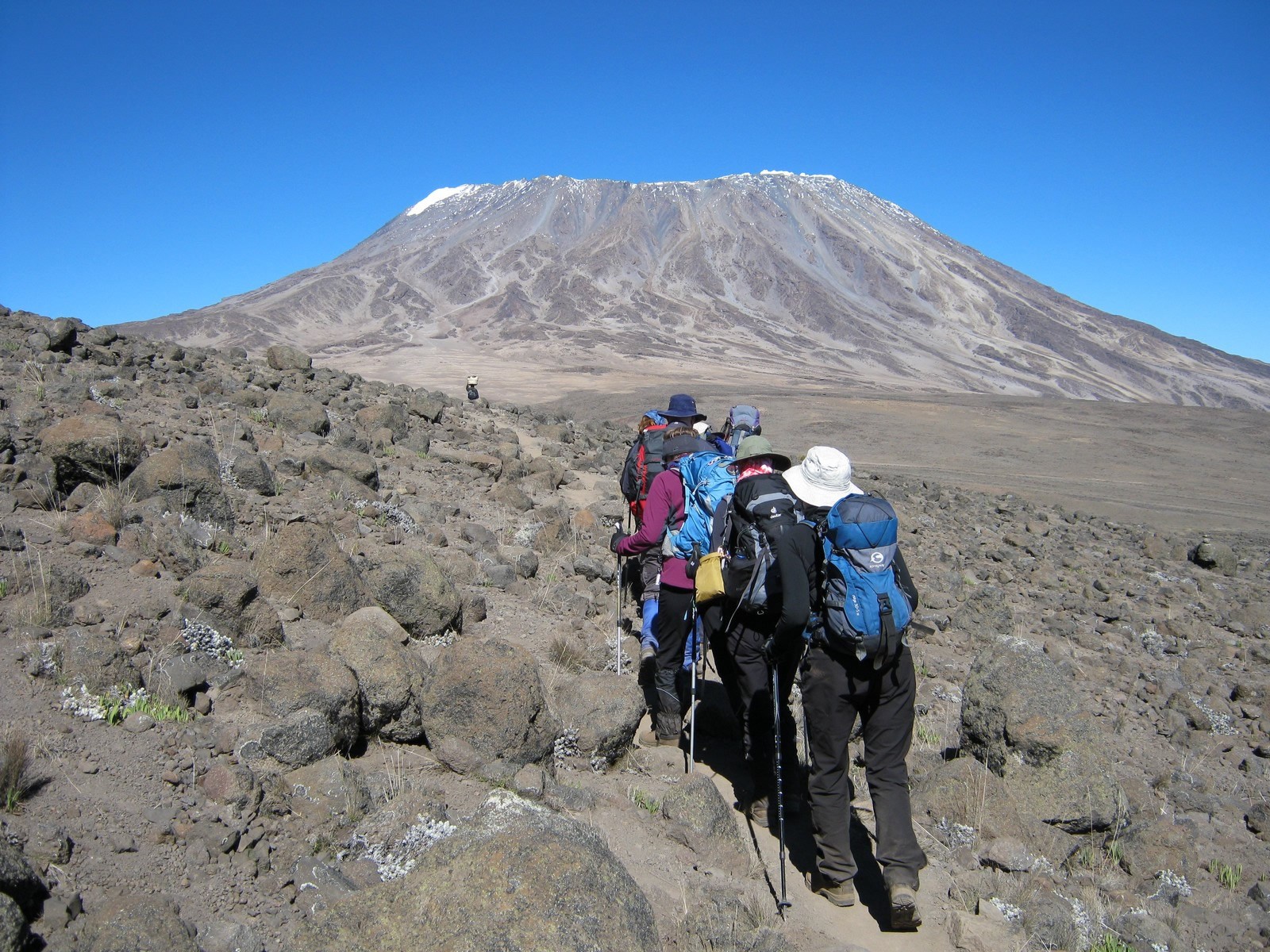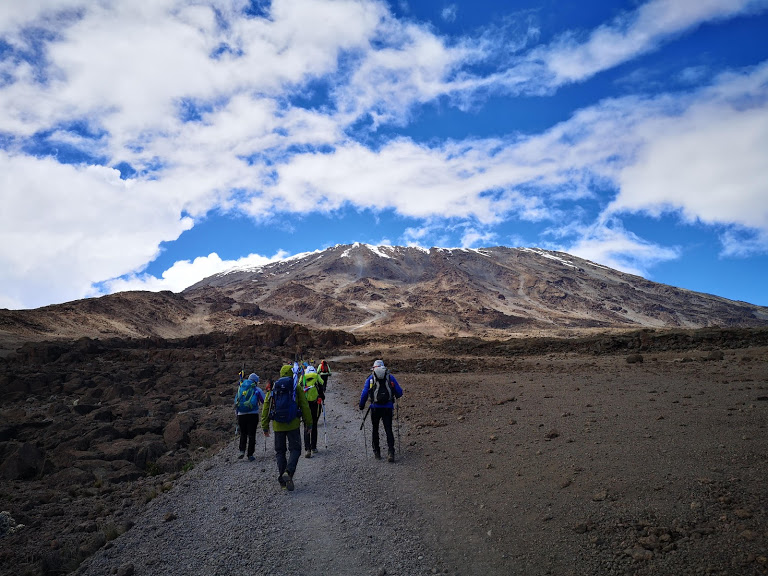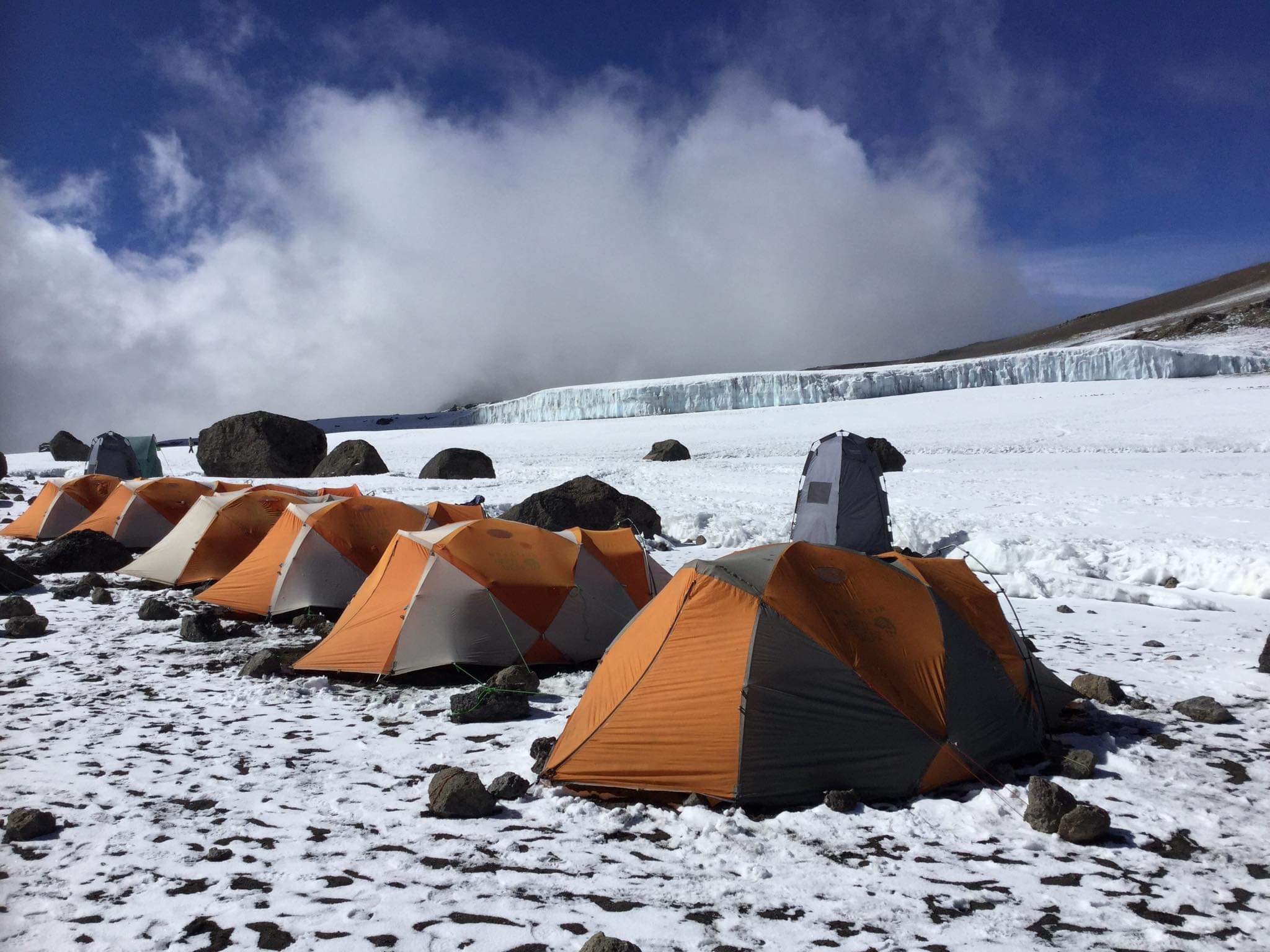KILIMANJARO ROUTES OVERVIEW;
Below are brief descriptions of the climbing routes on Mount Kilimanjaro.
Cost: $ = low, $$ = mid, $$$ = high, $$$$ = very high
Difficulty: ^ = low, ^^ = mid, ^^^ = high, ^^^^ = very high
MARANGU ROUTE:
Marangu (“Coca Cola”) Route; Known as the “Coca-Cola”route, the Marangu route is a classic trek on Mount Kilimanjaro. It is the oldest, most well
established route. Many favor the Marangu route because it is considered to be the easiest path on the mountain, given its gradual slope. It is also the
only route which offers sleeping huts in dormitory style accommodation. The minimum days required for this route is five, although the probability of
successfully reaching the top in that time period is not very high. Spending an extra acclimatization day on the mountain is highly recommended when climbing Kilimanjaro using the Marangu route.
However, despite its immense popularity, we avoid leading climbs on the Marangu route. The route has the least scenic variety of all the routes because the ascent and descent are done on the same path and it is the most crowded route for that reason. Marangu is favoured mostly during the rainy season, where the hut accommodations are preferred over wet ground, or for those who only have five days to climb Kilimanjaro.
Popular tourist route, approaches from southeast, easy, gentle gradients, beautiful rain forest section and moorlands, comfortable but basic hut shelter, poor acclimatization profile, descent on same trail.
$/^
72 km
5-6 days.
– We are charging Marangu route 6 days climb 1650 USD per person
– We are charging Marangu route 5 days climb 1500 USD per person
MACHAME ROUTE:
Known as the “Whiskey” route, the Machame route is now the most popular route on the mountain.
Compared with Marangu, the days on Machame are longer and the walks are steeper. The Machame route is considered a difficult route, and is better suited for more adventurous folks and those with some hiking or backpacking experience. The route begins from the south, then heads east, traversing underneath
Kilimanjaro’s southern ice field before summiting. The minimum number of days required for this route is six days, although seven days is recommended. The Machame route is scenically beautiful and varied.
However, due to the heavy crowds, it loses some of its splendor. It is very famous route, scenic and it has beautiful panoramic views with all the endemic and amazing plants that can only be found on Mount Kilimanjaro and no where else in the world. Most of our clients choose the Machame route. Most popular route, approaches from south, very scenic route with southern traverse, difficult route but very good for acclimatization, camping.
$$/^^
62 km
6-7 days.
– We are charging Machame route seven days climb 2000 USD per person
– We are charging Machame route six days climb 1900 USD per person
LEMOSHO ROUTE:
The Lemosho route is one of the newer routes on Mount Kilimanjaro. The route begins in the west and
rather than simply intersecting Shira Plateau (like Machame), Lemosho crosses it from Shira Ridge to Shira Camp. Climbers encounter low traffic until
the route joins the Machame route. Afterwards, Lemosho follows the same route through Lava Tower, Barranco and Barafu, known as the southern circuit. The minimum number of days required for this route is six days, although eight days is ideal. Lemosho is considered the most beautiful route on Kilimanjaro and boasts panoramic vistas on various sides of the mountain. It is our favourite route because it offers a great balance of low traffic, scenic views and a high summit success rate. Thus, Lemosho comes highly
recommended.
Long access drive to trailhead, approaches from west, remote, less frequented, beautiful heath section, very scenic with southern traverse, camping, difficult route but excellent for acclimatization, camping.
$$$/^^^
70 km
7-8 days.
– We are charging Lemosho route eight days climb 2100 USD per person
– We are charging Lemosho route seven days climb 1950 USD per person
SHIRA ROUTE:
The Shira route is another path that approaches Kilimanjaro from the west, and it is nearly identical to the Lemosho route. In fact, Shira was the original route and Lemosho is the improved variation. While Lemosho starts at Londorossi Gate and treks through the rain forest to Shira 1 Camp, the Shira route bypasses this walk by using a vehicle to transport climbers to Shira Gate, located near the Shira Ridge.
On the first day on the mountain, climbers begin their hike from 11,800 feet (3,600 m) and spend their first night at the same elevation at Simba Camp. Then, the route merges with Lemosho and follows the southern circuit route. Although Shira is a varied and beautiful route, Lemosho is recommended over Shira due to the high altitude of Shira’s starting point. It is possible that climbers will experience altitude related symptoms on the first day due to failed acclimatization. Climbers using Shira should be confident of their ability to acclimatize.
Almost same as Lemosho, approaches from west, long access drive to trailhead, trail starts at 11,800 ft, remote, less frequented, beautiful heath section, very scenic with southern traverse, camping, difficult route but excellent for acclimatization if ok at 11,800 ft, camping.
$$$/^^^
56 km
8 days.
– We are charging Shira route eight days climb 2100 USD per person
RONGAI ROUTE:
The Rongai route is the only route that approaches Kilimanjaro from the north, close to the Kenyan border.
Though gaining popularity amongst climbers, Rongai has low traffic. It is the preferred route for those looking for an alternative to the crowded Marangu route, for those who would like a more remote hike, and for those who are climbing during the rainy season (the north side receives less precipitation). The minimum number of days required for this route is six days, and seven days are recommended. Although the scenery is not as varied as the western routes, Rongai makes up for this by passing through true wilderness areas for days before joining the Marangu route at
Kibo camp. This route descends down the Marangu route. Rongai is a moderately difficult route, and is highly recommended, especially for those with less backpacking experience.
Long access drive to trailhead, approaches from north, remote, less frequented, easy, gentle gradients, beautiful alpine desert section, good alternative to Marangu, camping, fair acclimatization profile, camping.
$$/^
73 km
6-7 days.
– We are charging Rongai route seven days climb 1950 USD per person
– We are charging Rongai route six days climb 1800 USD per person
THE DIFFERENCES BETWEEN THESE ROUTES:
The routes have starting points located on multiple sides of the mountain.
The routes vary distance and accordingly so do the completion times.
There are relatively easy trails, difficult routes, and even dangerous ones.
Certain routes are favorable for altitude acclimatisation due to their route profile.
There are routes that are better when climbing during the rainy season.
One route offers hut accommodations while the rest are camping routes.
Machame is the most popular route on the mountain, with an estimated 45% of all climbers using this route.
Next is the Marangu route, with an estimated 40% of all climbers opting for this route. Lemosho and Rongai see far less use, but are the preferred routes for the more reputable (expensive) Kilimanjaro outfitters, and are thus growing in popularity. Shira, Umbwe and Northern Circuit barely have any foot traffic. Picking the wrong route can mean a unnecessarily difficult trek, a failed summit, or becoming ill and/ or injured. So it is important to compare the different elements that makes each route unique.
REMEMBER: PICK THE KILIMANJARO ROUTE THAT IS RIGHT FOR YOU.
WHAT’S INCLUDED IN OUR PRICE;
1). All national park fees.
2). Rescue fees.
3). Camping/Hut fees.
4). Good salary for the crew.
5). All meals and water on the mountain.
6). A nice and comfortable mattress.
7). Tents {guest personal tent, mess tent for our guests to have their meals, kitchen tent as cooking place and to store our food, as well as shelter tent for the crew use}.
8). Transport in general (from your arrival to your departure as well as from the hotel to the mountain and back).
9). Hotel staying in Moshi with bed and breakfast for 2 nights. One night before the climb and one night after the climb.
10). Professional and experienced Mountain Guides, amazing chef and trustee porters.
11). Portable chemical toilet (for camping routes).
12). Emergency Oxygen.
13). Pulse oxymeter to measure our clients heart beat and oxygen level.
NOT INCLUDED IN OUR PRICE;
1). Flights
2). Visas
3). Travel Insurance
4). Personal drinks and snacks
5). Tips for the climbing team
6). Lunch and dinner at the hotel plus extra days at the hotel
7). Personal equipment
8). Sleeping bags
Note that:
Our rates are very fair and reasonable as they contain almost all the important accommodations and services while travelling with us which is good and will make you comfortable too
